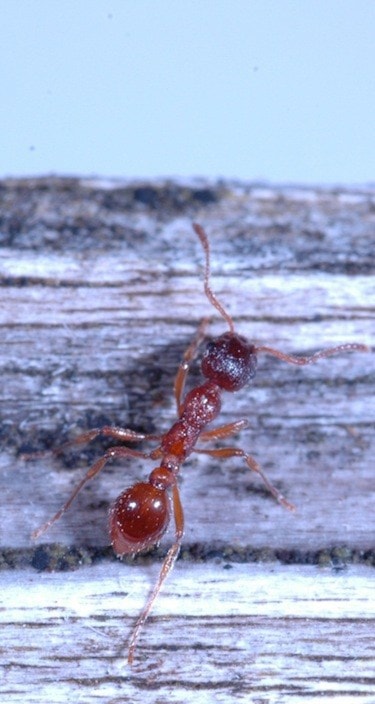Promising research to eradicate European fire ants was of huge interest to a packed house in Chilliwack this week.
The information session on EFAs drew a crowd of about 100 at Chilliwack secondary Wednesday night.
Entomologist Robert Higgins, B.C.'s foremost expert on ants, was one of the speakers addressing homeowners, business people and realtors.
Higgins, a researcher with Thompson Rivers, has been helping homeowners identify European fire ants, or EFAs, which are known to swarm in large numbers and bite when nests are disturbed.
"Identification is a big issue for people because these ants are very tricky to identify," Higgins told the Progress.
They are small and red, characterized by two waists, and a stinger, which can be seen under a microscope.
They arrived in B.C. about five years ago, and are confirmed to be present in Chilliwack.
Chilliwack residents have been shipping the researcher specimens to ID in the past few years, and some are looking for ways to clear the nests which have made their backyards virtually unusable.
The budding underground colonies can have up to 20 queens and thousands of worker ants.
VanDusen Botanical Gardens officials have confirmed they have the fire ants on-site, and are experimenting with trial methods of eradication.
One of the techniques "showing some promise" at VanDusen is locating the nests, digging them out, dropping them into large buckets, and treating them with low concentration pesticides.
It seems to be working better than just trying to manually remove the nests and infested soil, Higgins noted.
"When you dig out the nests, the queens and workers just run away through lateral escape tunnels.
"So when digging them out you are missing many of the queens and workers who escape the nest only to return later and get re-established.
"That is why heat treatments are not working very well, like steaming, applying boiling water or even using a burning propane torch."
But using a specific type of pesticide at low doses appears to be more effective in preventing the colonies from re-establishing. They'll be trying out something later this summer made of 0.25% permethrin.
"The queens have nowhere to go but back into the treated soil again," Higgins said.
It's not perfected yet as a method, and the findings are very preliminary, he cautioned.
"I will be testing them more methodically in Naramata, to determine the best way of eradicating them."
Celine Mailhiot is renting a property in Chilliwack where she believes half the backyard is infested with EFAs.
"In my garden bed there are millions of them. I see them every time I pull up dirt, and I get bit all the time in the summer."
It stings when someone is bitten, said Mailhiot, and the family hangs out on the left side of the yard to avoid them.
"We don't let the kids go on the right side," she said. "They seem impossible to get rid of. I tried baking soda and vinegar. They are everywhere. It's really infested."
While they don't have identification officially confirmed, she believes they are EFAs.
For anyone who would like to identify samples, they can get information from B.C. invasive species experts on how to ship them for identification at: http://www.for.gov.bc.ca/HRA/invasive-species/fire_ants.htm#How.
Higgins said he recently received specimens from Chilliwack, which also included the other type of fire ant, known as "impressive" fire ant, which has been causing problems at YVR, Vancouver Airport.
The 'impressive fire ant' is a self-distributing ant, whereas the European fire ant is distributed through movement of infested soil, plants or mulch.
"Each time we find that ant, we know a human put it there by moving soil around."
There is reason to stay optimistic.
"We certainly hope to have a better method worked out by the end of the summer, so residents can get this situation under control," Higgins said.
